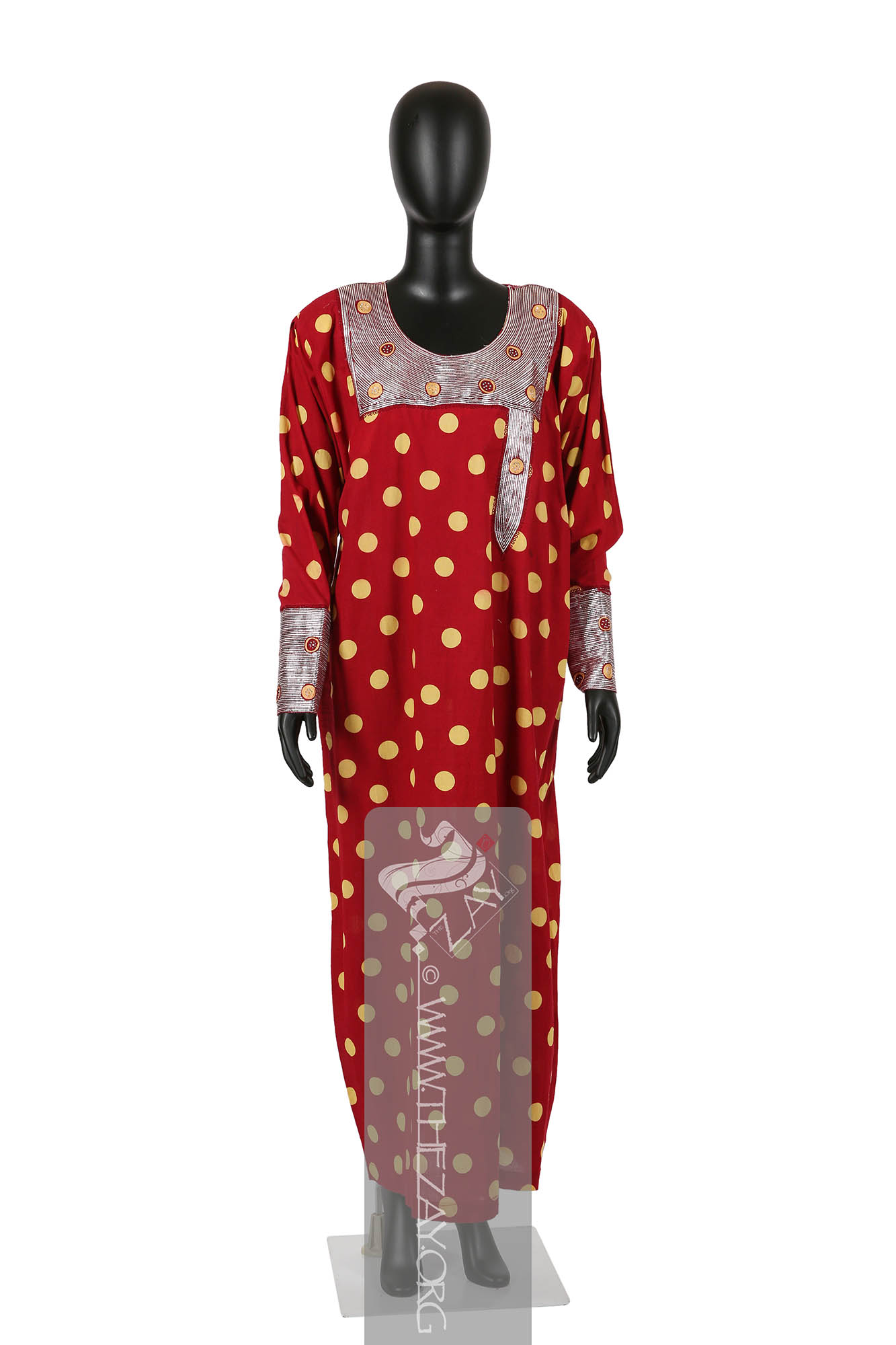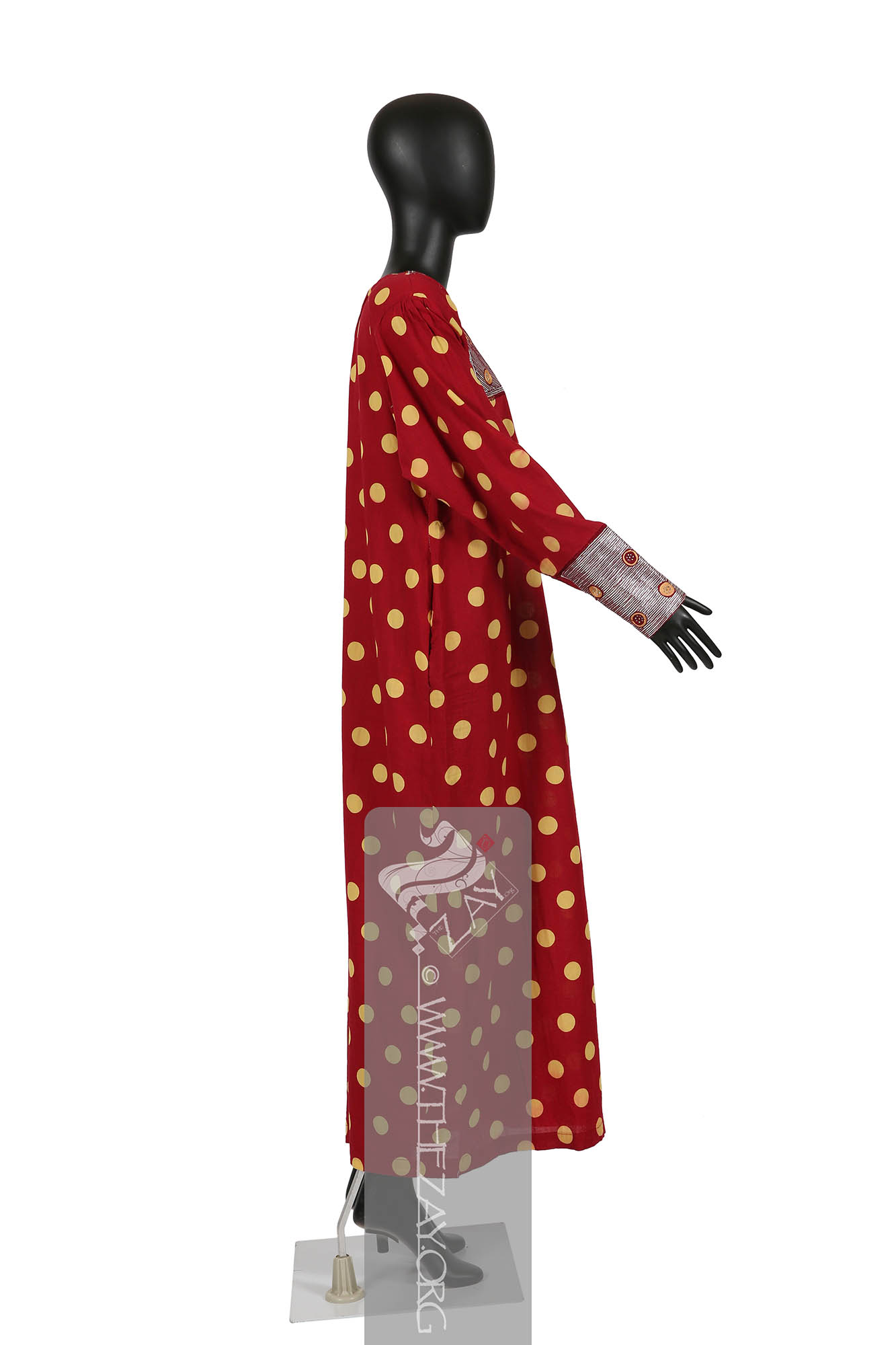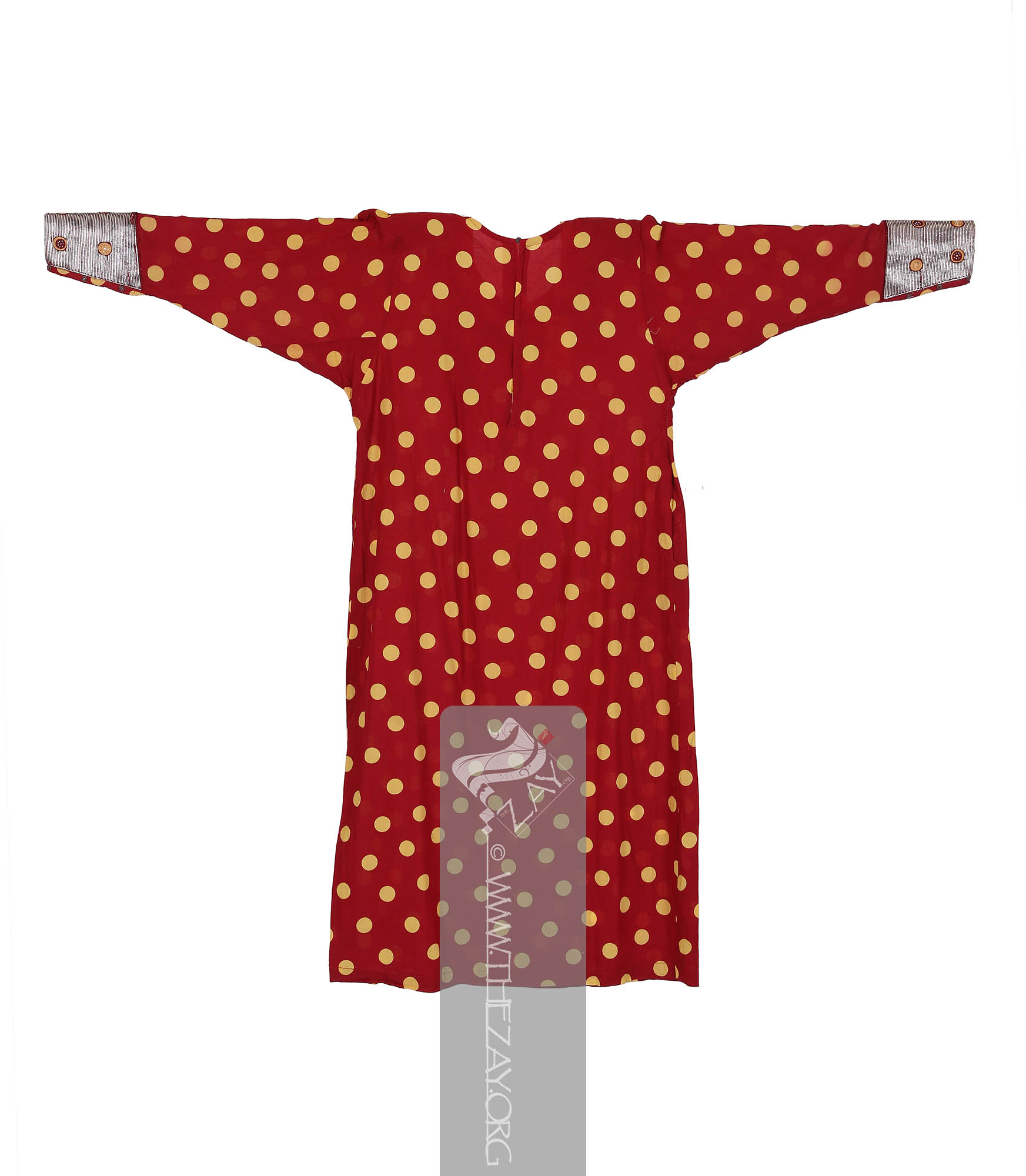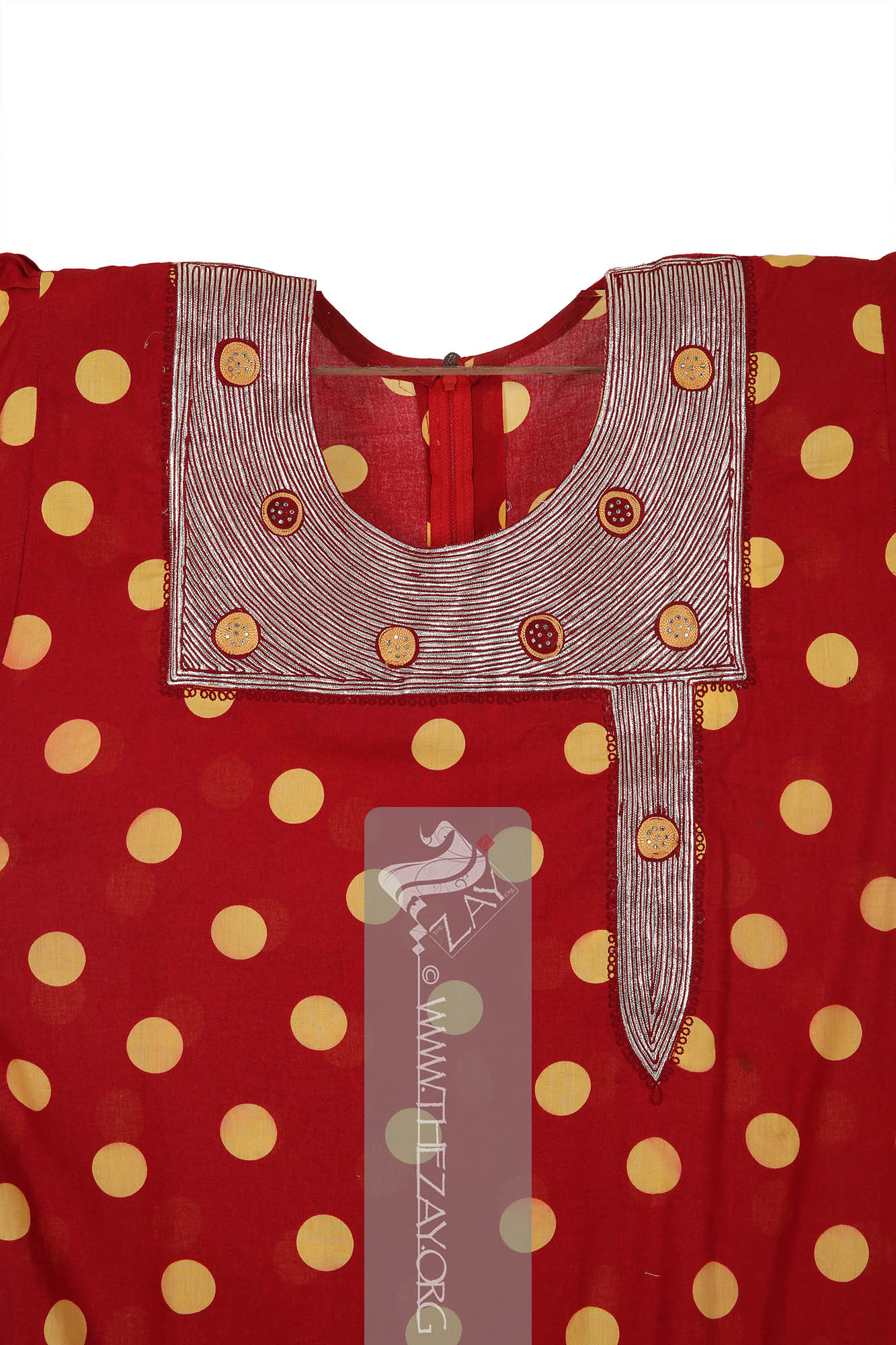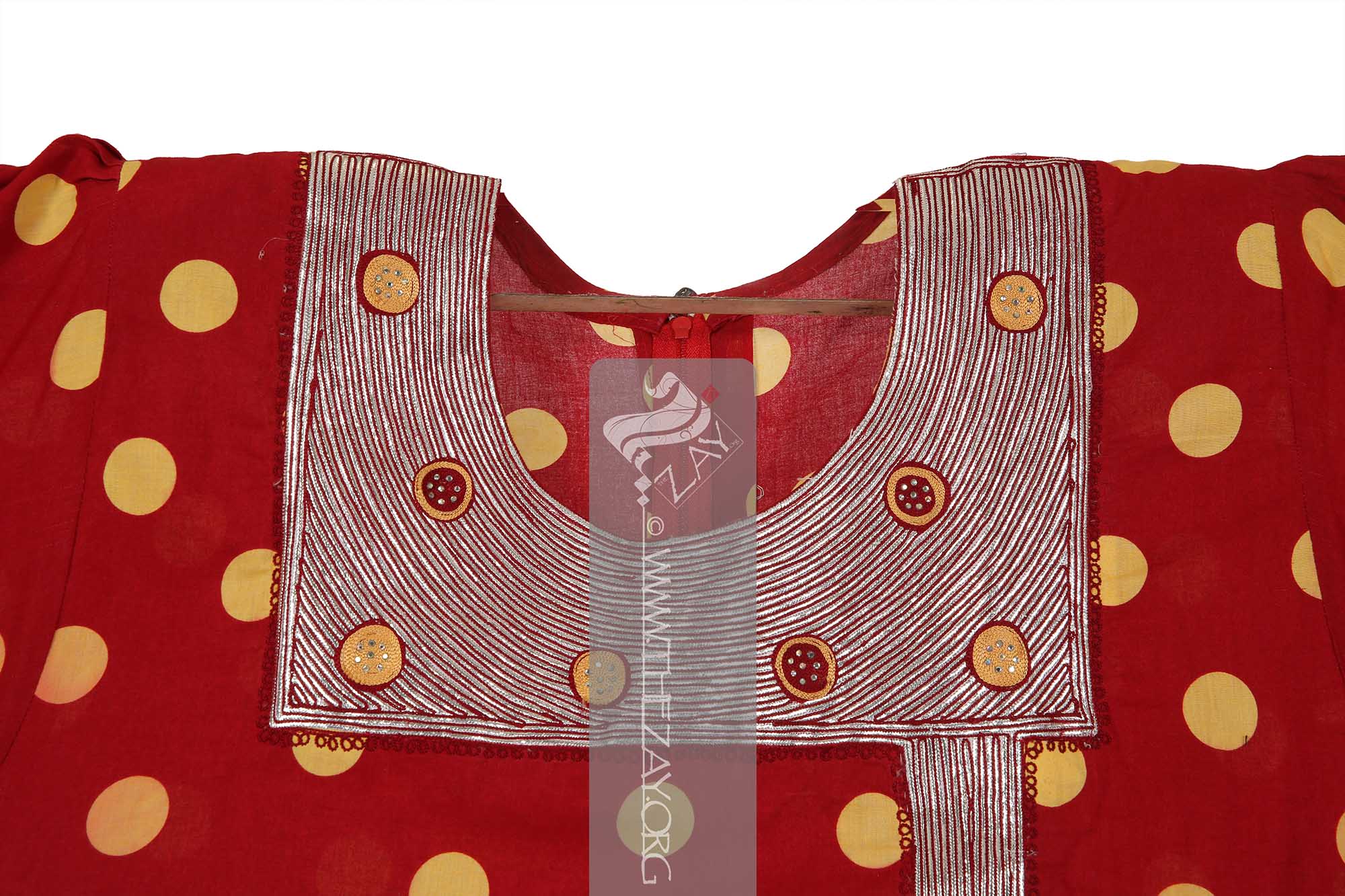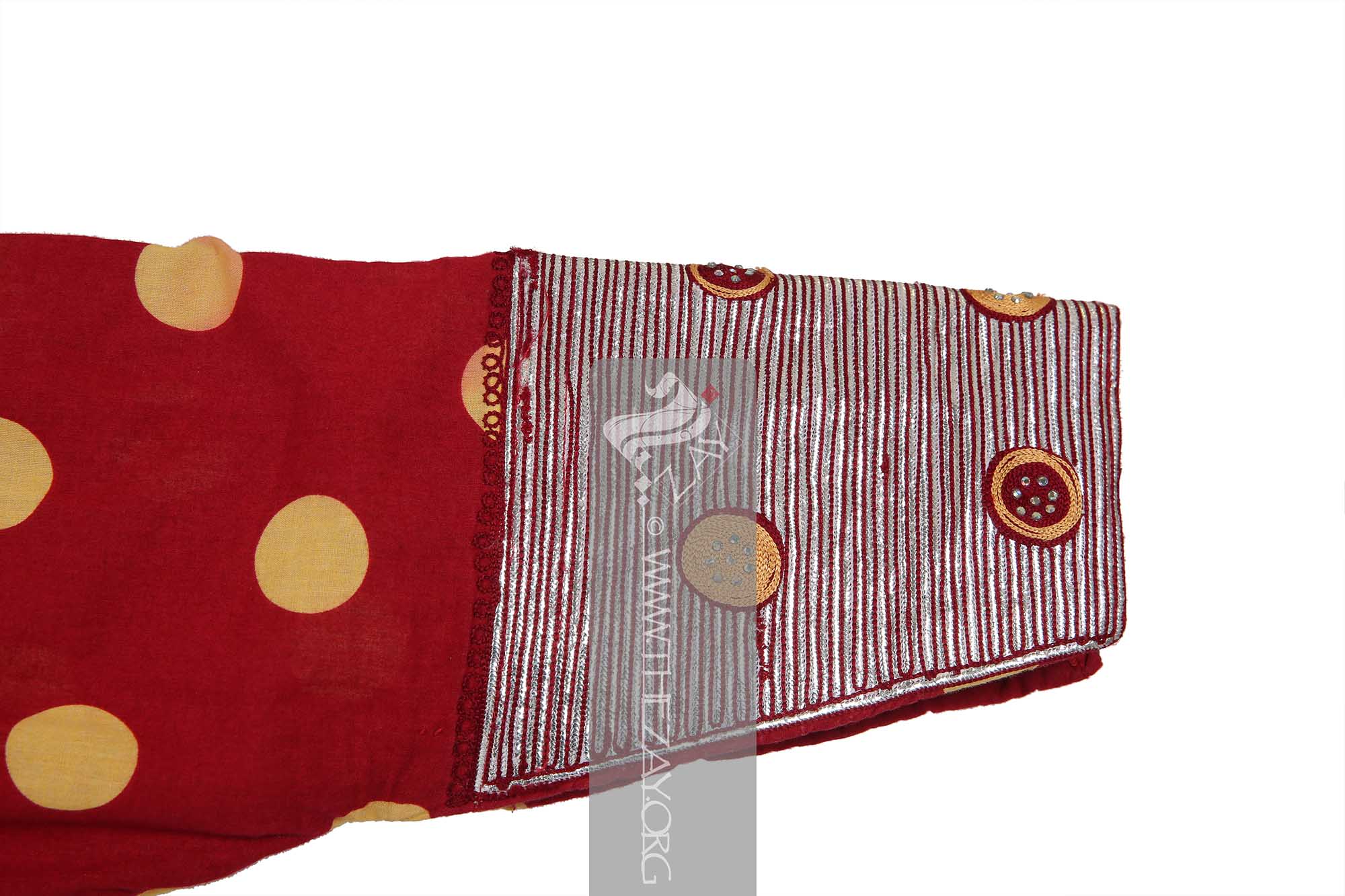Object History Dr. Reem Tariq
Ṭariq: (Arabic; Synonym: tulle_bi_talli
Tūlle_bi_tallī: (French: Tulle – a city in France where fine material for veil was first made; Turkish: tel – wire; Synonym: tariq; talli; badla; khus_dozi ), series of small metal knots made on a woven net ground as embellishment. The term is commonly used in the North African Arab region specifically in Egypt.
; talli; badla; khus_dozi ), series of small metal knots made on a woven net ground as embellishment. The term is commonly used in the Levant Arab region specifically in Lebanon.
el Mutwalli
Dr. Reem Tariq
Ṭariq: (Arabic; Synonym: tulle_bi_talli
Tūlle_bi_tallī: (French: Tulle – a city in France where fine material for veil was first made; Turkish: tel – wire; Synonym: tariq; talli; badla; khus_dozi ), series of small metal knots made on a woven net ground as embellishment. The term is commonly used in the North African Arab region specifically in Egypt.
; talli; badla; khus_dozi ), series of small metal knots made on a woven net ground as embellishment. The term is commonly used in the Levant Arab region specifically in Lebanon.
el Mutwallī: Founder (CEO) of the Zay
Zay: (Arabic: costume, Pl. azyaā’), a set of clothes in a style typical of a particular country or historical period. Initiative, a public figure, speaker and author. An expert curator and consultant in Islamic art and architecture, interior design, historic costume, and UAE heritage. purchased this article of dress in 1993 from Fatimah Al Mghani who had originally sourced it from
Um
‘Um: (Arabic: mother), a sign of respect or formality, women are not addressed by their own names, rather as mother of, then adding the name of the eldest son as in Um Mohammed. Also can mean: with, for example (‘um mishakhiṣ) meaning with gold embellishment. ‘Ubaid of Al Dhanhani tribe.
Fatimah Al Mghani is a social researcher and folklore expert, she is also a friend and fellow colleague of Dr. Reem, a supporter of The
Zay
Zay: (Arabic: costume, Pl. azyaā’), a set of clothes in a style typical of a particular country or historical period. Initiative, and a valuable reference in UAE cultural heritage.
Um
‘Um: (Arabic: mother), a sign of respect or formality, women are not addressed by their own names, rather as mother of, then adding the name of the eldest son as in Um Mohammed. Also can mean: with, for example (‘um mishakhiṣ) meaning with gold embellishment. ‘Ubaid of Al Dhanhani was born in 1953, from the Emirate of Fujairah. A housewife, talented in tailoring and crafts works. Similar to many of her peers, she never acquired any formal schooling. She married her paternal cousin at the age of 15 and bore 3 daughters and 6 sons, who all went on to attain university degrees.
Object Features The tunic (
Kandurah_arabiyah
Kandūrah_‘arabīyah: (colloquial Emirati term), coined post 1990s, to refer to the qamīs-like tunic with vertical slit located on the left side of the neckline extending down the chest. The origins of this slit are believed to lie in the Punjabi (kurta
Kūrtā: (Urdu and Persian: kurtah
Kurtah: (Urdu and Persian: kurta, synonyms: bīchī, gawan, fustān, nafnūf, kirtah), a loose sleeveless shirt of varying lengths, typically falling either just above or somewhere below the knees, with its side-seams left open at the bottom, worn in South Asia, usually with a salwar
Salwar: (Farsi: shalvār; Synonym: ṣarwāl, shirwāl ), trousers featuring tapering ankles and drawstring closure of Central Asian origin. They disseminated in the Indian subcontinent between c.1st-3rd century BCE. Although exact period of its arrival in the Arab world is disputed their widespread adoption is confirmed from the 12th century.
, churidars, or pyjama. In Hijazi dialect, the term refers to a sleeved, waist-cinched dress that comes in different styles, popularly worn since the 1950s.). a sleeveless shirt of varying length, typically falling either just above or somewhere below the knees of the wearer, with its side-seams left open at the bottom.) and is generally fastened using cotton thread ball-like buttons ('igham), or metal snaps (siq_w_bic) which were subsequently replaced by transparent versions.ly replaced by transparent versions.) is made of a red light weight cotton fabric printed in scattered 2 cm diameter yellow polka dot motif known locally either as (
bu_tilah
Bū_tīlah: (Arabic, bū: diminutive of abu: father, tīlah: glass marbles), colloquially in UAE refers to printed or embroidered glass-marble shape and size circular or polka dot motifs.) or (
bu_baysah
Bū_baysah (Indian: Paisa: coin), UAE colloquial reference to polka dots in the shape and size of the Indian Paisa coin an earlier denomination of the Indian Rupee.).
It is an important article of dress that demonstrates the post-millennium evolution of this particular tunic dress (
kandurah_arabiyah
Kandūrah_‘arabīyah: (colloquial Emirati term), coined post 1990s, to refer to the qamīs-like tunic with vertical slit located on the left side of the neckline extending down the chest. The origins of this slit are believed to lie in the Punjabi (kurta
Kūrtā: (Urdu and Persian: kurtah
Kurtah: (Urdu and Persian: kurta, synonyms: bīchī, gawan, fustān, nafnūf, kirtah), a loose sleeveless shirt of varying lengths, typically falling either just above or somewhere below the knees, with its side-seams left open at the bottom, worn in South Asia, usually with a salwar
Salwar: (Farsi: shalvār; Synonym: ṣarwāl, shirwāl ), trousers featuring tapering ankles and drawstring closure of Central Asian origin. They disseminated in the Indian subcontinent between c.1st-3rd century BCE. Although exact period of its arrival in the Arab world is disputed their widespread adoption is confirmed from the 12th century.
, churidars, or pyjama. In Hijazi dialect, the term refers to a sleeved, waist-cinched dress that comes in different styles, popularly worn since the 1950s.). a sleeveless shirt of varying length, typically falling either just above or somewhere below the knees of the wearer, with its side-seams left open at the bottom.) and is generally fastened using cotton thread ball-like buttons ('igham), or metal snaps (siq_w_bic) which were subsequently replaced by transparent versions.ly replaced by transparent versions.) specific to the UAE and is believed to originate from the Punjabi tunic (
kurta
Kūrtā: (Urdu and Persian: kurtah
Kurtah: (Urdu and Persian: kurta, synonyms: bīchī, gawan, fustān, nafnūf, kirtah), a loose sleeveless shirt of varying lengths, typically falling either just above or somewhere below the knees, with its side-seams left open at the bottom, worn in South Asia, usually with a salwar
Salwar: (Farsi: shalvār; Synonym: ṣarwāl, shirwāl ), trousers featuring tapering ankles and drawstring closure of Central Asian origin. They disseminated in the Indian subcontinent between c.1st-3rd century BCE. Although exact period of its arrival in the Arab world is disputed their widespread adoption is confirmed from the 12th century.
, churidars, or pyjama. In Hijazi dialect, the term refers to a sleeved, waist-cinched dress that comes in different styles, popularly worn since the 1950s.). a sleeveless shirt of varying length, typically falling either just above or somewhere below the knees of the wearer, with its side-seams left open at the bottom.).
Its defining feature is the simulated vertical slit (
shaj
Shaj: (Arabic: shaq), meaning 'a rip or tear’ and refers to the opening at the neckline of a garment, also known as (jayīb). The letter (qaf) is turned (jīm) in many colloquial Arab dialects.) on the left side of the neckline (
halj
Ḥalj: (Arabic: ḥalq: mouth, pl: ḥlūj,). Colloquially, the term refers to the neckline opening. The letter (qāf) is turned (jīm) in many Arab dialects.) that extends down the chest area. The slit (
shaj
Shaj: (Arabic: shaq), meaning 'a rip or tear’ and refers to the opening at the neckline of a garment, also known as (jayīb). The letter (qaf) is turned (jīm) in many colloquial Arab dialects.) originally functioned as a means to enlarge the fitted neckline opening and allow the head to pass through, which was then closed and opened by cotton buttons (igam) or snaps (
siq_w_biq
Siq_w_biq: (Colloquial Arabic), metallic snap studs used to fasten clothing. The term in an onomatopoeia representing the sound that the snaps make when opening and snapping shut.).
However, in this example, we see the neckline is widened to complement western-style necklaces. Though the outline of this side slit (
shaj
Shaj: (Arabic: shaq), meaning 'a rip or tear’ and refers to the opening at the neckline of a garment, also known as (jayīb). The letter (qaf) is turned (jīm) in many colloquial Arab dialects.) continues to be delineated through embroidery and other forms of adornment, the functional element of the side slit (
shaj
Shaj: (Arabic: shaq), meaning 'a rip or tear’ and refers to the opening at the neckline of a garment, also known as (jayīb). The letter (qaf) is turned (jīm) in many colloquial Arab dialects.) itself has become obsolete.
Interestingly, one of the key reasons the side slit (
shaj
Shaj: (Arabic: shaq), meaning 'a rip or tear’ and refers to the opening at the neckline of a garment, also known as (jayīb). The letter (qaf) is turned (jīm) in many colloquial Arab dialects.) has been maintained in a purely decorative form is due to most tailors being non-native and lacking the background knowledge of the UAE’s cultural heritage. Moreover, many tailors began to include a zipper to the back of the garment which served the exact function of the earlier frontal side slit (
shaj
Shaj: (Arabic: shaq), meaning 'a rip or tear’ and refers to the opening at the neckline of a garment, also known as (jayīb). The letter (qaf) is turned (jīm) in many colloquial Arab dialects.).
Sadly, this history of the evolution of the
shaj
Shaj: (Arabic: shaq), meaning 'a rip or tear’ and refers to the opening at the neckline of a garment, also known as (jayīb). The letter (qaf) is turned (jīm) in many colloquial Arab dialects. has been lost, not only to these tailors but also to the Emirati women who wear the contemporary versions of this
kandurah_arabiyah
Kandūrah_‘arabīyah: (colloquial Emirati term), coined post 1990s, to refer to the qamīs-like tunic with vertical slit located on the left side of the neckline extending down the chest. The origins of this slit are believed to lie in the Punjabi (kurta
Kūrtā: (Urdu and Persian: kurtah
Kurtah: (Urdu and Persian: kurta, synonyms: bīchī, gawan, fustān, nafnūf, kirtah), a loose sleeveless shirt of varying lengths, typically falling either just above or somewhere below the knees, with its side-seams left open at the bottom, worn in South Asia, usually with a salwar
Salwar: (Farsi: shalvār; Synonym: ṣarwāl, shirwāl ), trousers featuring tapering ankles and drawstring closure of Central Asian origin. They disseminated in the Indian subcontinent between c.1st-3rd century BCE. Although exact period of its arrival in the Arab world is disputed their widespread adoption is confirmed from the 12th century.
, churidars, or pyjama. In Hijazi dialect, the term refers to a sleeved, waist-cinched dress that comes in different styles, popularly worn since the 1950s.). a sleeveless shirt of varying length, typically falling either just above or somewhere below the knees of the wearer, with its side-seams left open at the bottom.) and is generally fastened using cotton thread ball-like buttons ('igham), or metal snaps (siq_w_bic) which were subsequently replaced by transparent versions.ly replaced by transparent versions..
The sleeves are relatively wider than in earlier examples, with some gathering on the shoulders and underarm gusset (
bat
Bāṭ: (Arabic: underarm/armpit, pl. bītān, synonym: ibt, tkhrāṣah, tnfāyah/tnfājah), gusset, a triangular or rhomboidal piece of fabric inserted into the seam to add breadth or reduce stress from tight-fitting clothing. Used for underarms on tunic dresses, side sleeve panels on overgarments (thāwb), and undergarments (ṣarāwl). ). They are fastened at the wrists with metal snaps (
siq_w_biq
Siq_w_biq: (Colloquial Arabic), metallic snap studs used to fasten clothing. The term in an onomatopoeia representing the sound that the snaps make when opening and snapping shut.).
The embroidery on both the neckline and sleeve cuffs (
hyul
Ḥyūl: (Arabic: hjūl: to walk or jump), colloquially in the Gulf region, the term refers to the hem of garment or its sleeves. In pronunciation, the (j) turns to (y). ) is covered in dense machine embroidered lines (khawar
daj
Daj: (Arabic: daj: blanketed with), Colloquially in the UAE, the term refers to densely covered machine embroidery work. The term (dag) is also simultaneously used, as a general term for embroidery or adornment (dag_tallī), or as in ‘made by’ or ‘made in’ as in ‘made in India’. ) resembling traditional UAE silver metallic braids (
talli
Tallī: (Turkish: tel – wire, string), Gulf Arab – a woven braided trimming made with metal wire, threads and ribbons often sewn on detachable panels used as embellishments. Other – (Synonym: tulle_bi_talli
Tūlle_bi_tallī: (French: Tulle – a city in France where fine material for veil was first made; Turkish: tel – wire; Synonym: tariq; talli; badla; khus_dozi ), series of small metal knots made on a woven net ground as embellishment. The term is commonly used in the North African Arab region specifically in Egypt.
; tariq; badla; khus_dozi), series of small metal knots made on a woven net ground as embellishment.
), using silver-coloured metallic thread (
zari
Zarī: (Persian two-syllables: zar: gold & dozi: embellishment), complex embroidery technique that uses metal alloy on silk, satin, or velvet, and may include pearls, beads, and precious stones. Colloquially in the Arab gulf region, the term (zarī) is loosely applied to any gilded thread, embellishment or gilded brocade fabric. Originated in ancient Persia it has been used extensively in Indian and Middle Eastern textiles for centuries. ), with scattered polka dot motifs copying the fabric print in form and size, in yellow and red silk thread (
brisam
Brīsam: (Persian: Aabrēšam, Syriac: Aprišum
‘Um: (Arabic: mother), a sign of respect or formality, women are not addressed by their own names, rather as mother of, then adding the name of the eldest son as in Um Mohammed. Also can mean: with, for example (‘um mishakhiṣ) meaning with gold embellishment., English: prism). Generally, refers to the finest form of silk thread. Also pronounced (ibrīsam).). Thus, known as (tab‘ah ). These polka dots are embellished with clear iron-on crystals at their center.




